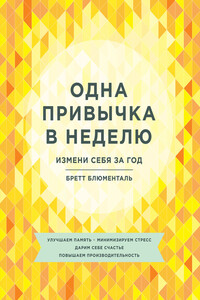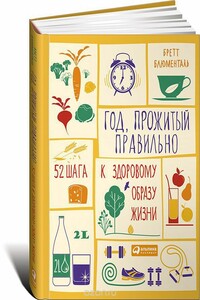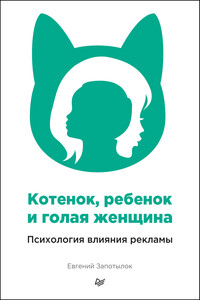(12), 2471–2477.
4. Kresser, C. (2016, September 6). An update on Omega-6 PUFAs. Retrieved from https://chriskresser.com/an-update-on-omega-6-pufas/.
5. Chowdhury, R., Warnakula, S., Kunutsor, S., Crowe, F., Ward, H. A., Johnson, L.,… Khaw, K. T. (2014). Association of dietary, circulating, and supplement fatty acids with coronary risk: A systematic review and meta-analysis. Annals of Internal Medicine, 160(6), 398–406.
6. Dreon, D. M., Fernstrom, H. A., Campos, H., Blanche, P., Williams, P. T., & Krauss, R. M. (1998). Change in dietary saturated fat intake is correlated with change in mass of large low-density-lipoprotein particles in men. American Journal of Clinical Nutrition, 67(5), 828–836.
7. Hyman, M. (2016, March 30). Fat: What I got wrong, what I got right. Retrieved from http://drhyman.com/blog/2016/03/30/fat-what-i-got-wrong-what-i-got-right/.
8. Sachdeva, A., Cannon, C. P., Deedwania, P. C., LaBresh, K. A., Smith, S. C., Dai, D.,… Fonarow, G. C. (2009). Lipid levels in patients hospitalized with coronary artery disease: An analysis of 136,905 hospitalizations in Get with the Guidelines [database]. American Heart Journal, 157(1), 111–117.
9. Hyman, M. (2016, April 6). Is coconut oil bad for your cholesterol? Retrieved from http://drhyman.com/blog/2016/04/06/is-coconut-oil-bad-for-your-cholesterol/.
Неделя 40. Меньше химии
1. Food and Drug Administration. (Updated March 23, 2014). Cosmetics safety Q&A: Prohibited ingredients. https://www.fda.gov/Cosmetics/ResourcesForYou/Consumers/ucm167234.htm.
2. De Groot, A. C., & Veenstra, M. (2010). Formaldehyde-releasers in cosmetics in the USA and in Europe. Contact Dermatitis, 62(4), 221–224.
3. Lefebvre, M. A., Meuling, W. J., Engel, R., Coroama, M. C., Renner, G., Pape, W., & Nohynek, G. J. (2012). Consumer inhalation exposure to formaldehyde from the use of personal care products/cosmetics. Regulatory Toxicology and Pharmacology, 63(1), 171–176.
4. Kodjak, A. (2016, September 2). FDA bans 19 chemicals used in antibacterial soaps. Your Health, NPR. Retrieved from http://www.npr.org/sections/health-shots/2016/09/02/492394717/fda-bans-19-chemicals-used-in-antibacterial-soaps.
5. Harley, K. G., Kogut, K., Madrigal, D. S., Cardenas, M., Vera, I. A., Meza-Alfaro, G.,… Parra, K. L. (2016). Reducing phthalate, paraben, and phenol exposure from personal care products in adolescent girls: Findings from the HERMOSA intervention study. Environmental Health Perspectives, 124(10), 1600–1607. http://doi.org/10.1289/ehp.1510514.
6. Grossman, E. (2014, June 9). Banned in Europe, safe in the US. Ensia. Retrieved from https://ensia.com/features/banned-in-europe-safe-in-the-u-s/.
7. Summaries of EU Legislation. (2000, February 2). The precautionary principle. Retrieved from http://eur-lex.europa.eu/legal-content/EN/TXT/?uri=URISERVpercent3Al32042.
8. Kunisue, T., Chen, Z., Buck Louis, G. M., Sundaram, R., Hediger, M. L., Sun, L., & Kannan, K. (2012). Urinary concentrations of benzophenone-type UV filters in US women and their association with endometriosis. Environmental Science & Technology, 46(8), 4624–4632.
9. Schlumpf, M., Kypke, K., Wittassek, M., Angerer, J., Mascher, H., Mascher, D.,… Lichtensteiger, W. (2010). Exposure patterns of UV filters, fragrances, parabens, phthalates, organochlor pesticides, PBDEs, and PCBs in human milk: Correlation of UV filters with use of cosmetics. Chemosphere, 81(10), 1171–1183.
10. Louis, G. M. B., Chen, Z., Kim, S., Sapra, K. J., Bae, J., & Kannan, K. (2015). Urinary concentrations of benzophenone-type ultraviolet light filters and semen quality. Fertility and Sterility, 104(4), 989–996.
11. Environmental Working Group. (2015, October 19). Duke-EWG study finds toxic nail polish chemical in women’s bodies.
12. European Commission. (2005, July 5). Permanent ban of phthalates: Commission hails long-term safety for children’s toys [Press release]. Retrieved from http://europa.eu/rapid/press-release_IP-05-838_en.htm.
Неделя 41. Развивайте интеллект
1. Gruber, M. J., Gelman, B. D., & Ranganath, C. (2014). States of curiosity modulate hippocampus-dependent learning via the dopaminergic circuit.










